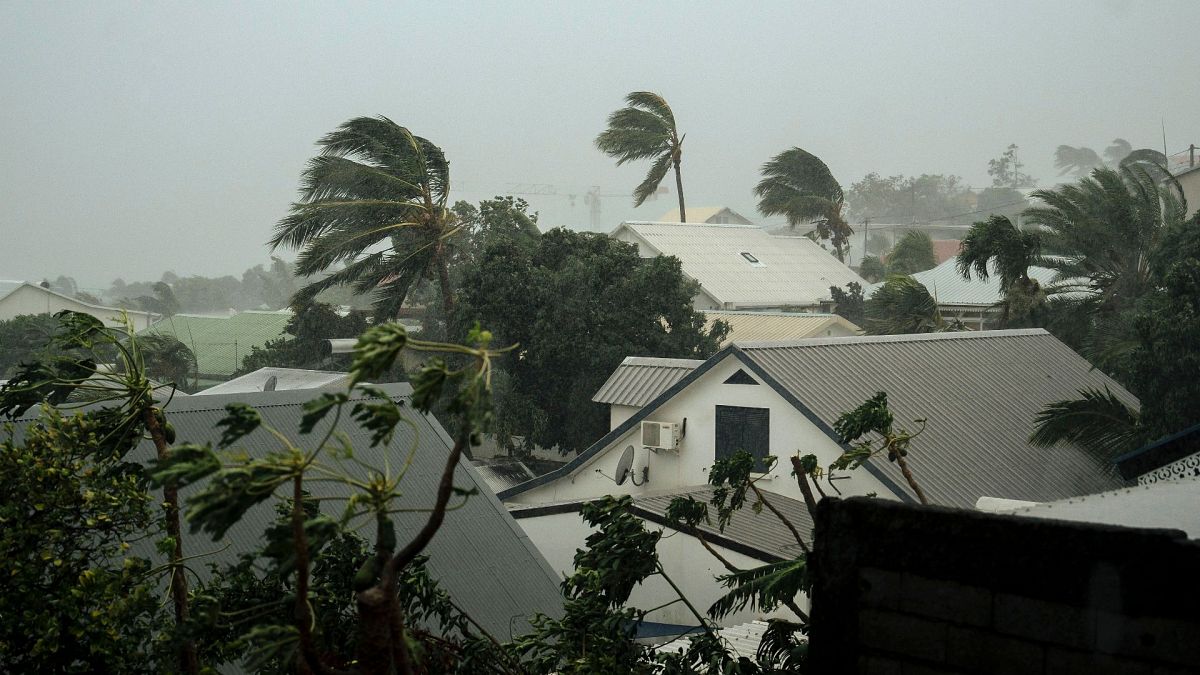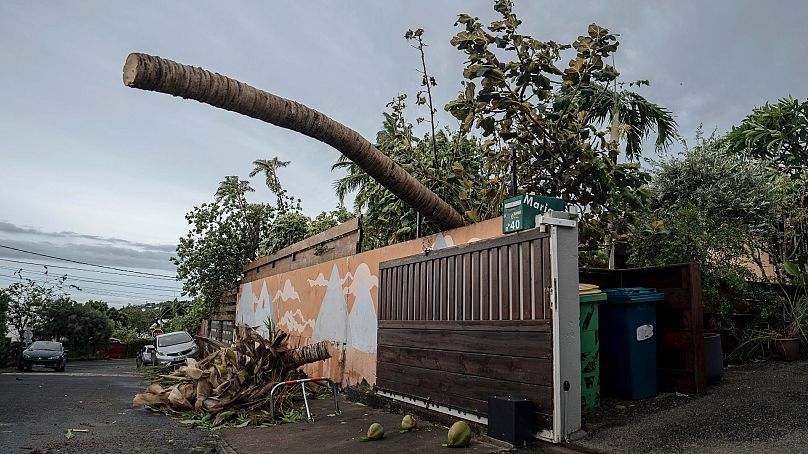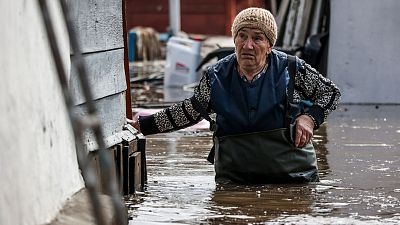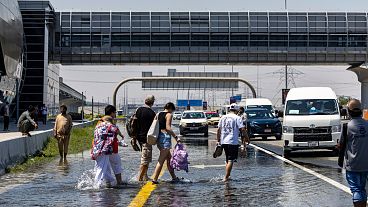Scientists say human-caused climate change has intensified extreme weather in the region.
A tropical cyclone caused heavy flooding and at least one death in Mauritius on Monday as cars were washed away by surges of water in the Indian Ocean island's capital city and elsewhere. A motorcyclist died in an accident caused by the flooding, the government said and imposed a curfew.
The government issued an order that everyone except emergency and health workers, members of the security services and those requiring medical treatment must return home and remain there.
Some people were also being evacuated as the floodwaters caused by Tropical Cyclone Belal threatened houses and other buildings. Schools were closed and hospitals were told to only keep their emergency departments open.
The main airport was closed and flights into and out of the island nation of 1.2 million people were canceled until further notice, the government said.
Curfew imposed as tropical cyclone hits Mauritius
The Mauritius newspaper L'Express published videos of cars floating down streets that looked more like raging rivers in the capital, Port Louis, and other parts of the island. Some people climbed onto the roof of their car and clung on, according to the images published by L'Express. Motorists who had escaped from cars were seen being pulled from the floodwaters and to safety by others.
Vehicles were left piled up, some of them overturned, after some of the floodwaters receded.
The water also entered buildings and flooded homes and the lobbies of offices. The Central Bank of Mauritius building was reportedly flooded.
Evacuations were being carried out, the government said in a statement.
Mauritius' National Crisis Committee ordered everyone to return home at 8 pm local time. The curfew would remain in effect until noon on Tuesday, it said.
Mauritius' national meteorological department said the eye of the storm was still expected to come closer to Mauritius and pass about 90 kilometres south of the island at its closest point early on Tuesday morning, warning that the worst might still be ahead.
The island would feel the effects of the cyclone “for hours”, the Mauritius Meteorological Services said.
Cyclone Belal first battered French island of Reunion
Belal had earlier also battered the nearby French island of Reunion, where the intense rains and powerful winds left about a quarter of households without electricity after hitting on Monday morning, according to the prefecture of Reunion.
Many people in Reunion had also lost internet and phone services, and water connections to tens of thousands of homes were cut. Authorities in the French outpost said a homeless person was found dead in Saint-Gilles on the island’s west coast. The circumstances of that death were unclear.
Reunion had declared the highest storm alert level on Sunday as Belal approached. Under the purple alert, people were told to stay at home and even emergency services were under lockdown. French weather forecaster Meteo France said Belal reached Reunion on Monday morning local time, bringing “heavy rains, sometimes stormy, very violent winds and powerful and raging seas.” Some eight-metre high waves were recorded.
But the alert was lifted after the worst of the storm passed Reunion on Monday afternoon and charged toward Mauritius, around 220 kilometres to the northeast.
Human-caused climate change is increasing cyclone intensity
Cyclones are common between January and March in southern Africa as oceans in the southern hemisphere reach their warmest temperatures. The hotter water is fuel for cyclones.
But scientists say human-caused climate change has intensified extreme weather, making cyclones more frequent and rainier when they hit.
Some climate scientists have identified a direct link between global warming and the intensity of some cyclones in the region. In a 2022 study, the World Weather Attribution group used weather observations and computer simulations to model scenarios under different levels of temperature rise.
It concluded that climate change increased the likelihood and intensity of the rainfall associated with Tropical Storm Ana and Tropical Cyclone Batsirai - two extreme weather events that took place that year.
In 2019, Cyclone Idai ripped into Africa from the Indian Ocean, leaving more than 1,000 people dead in Mozambique, Malawi and Zimbabwe and causing a humanitarian crisis. The United Nations said it was one of the deadliest storms on record in the southern hemisphere.




